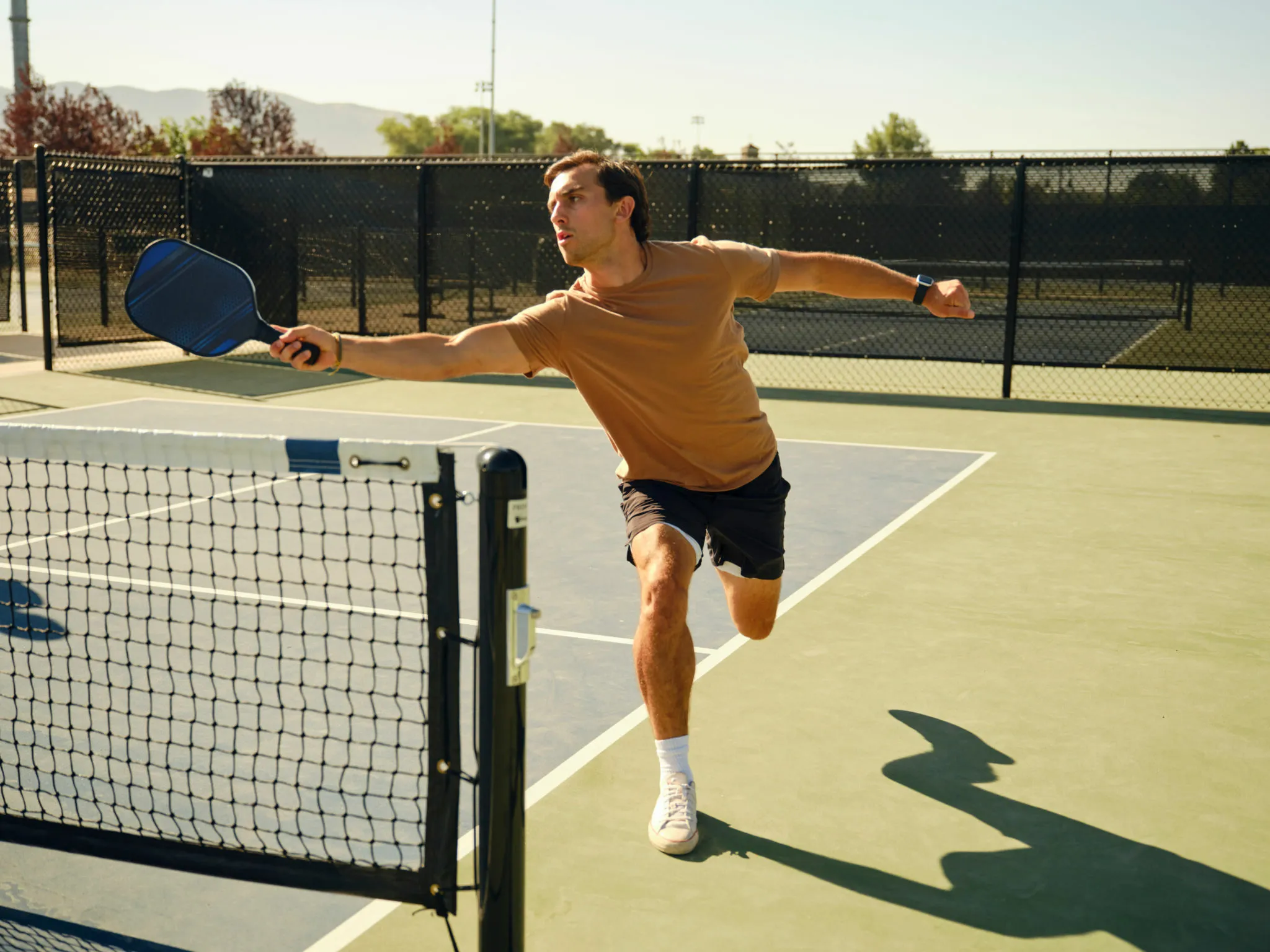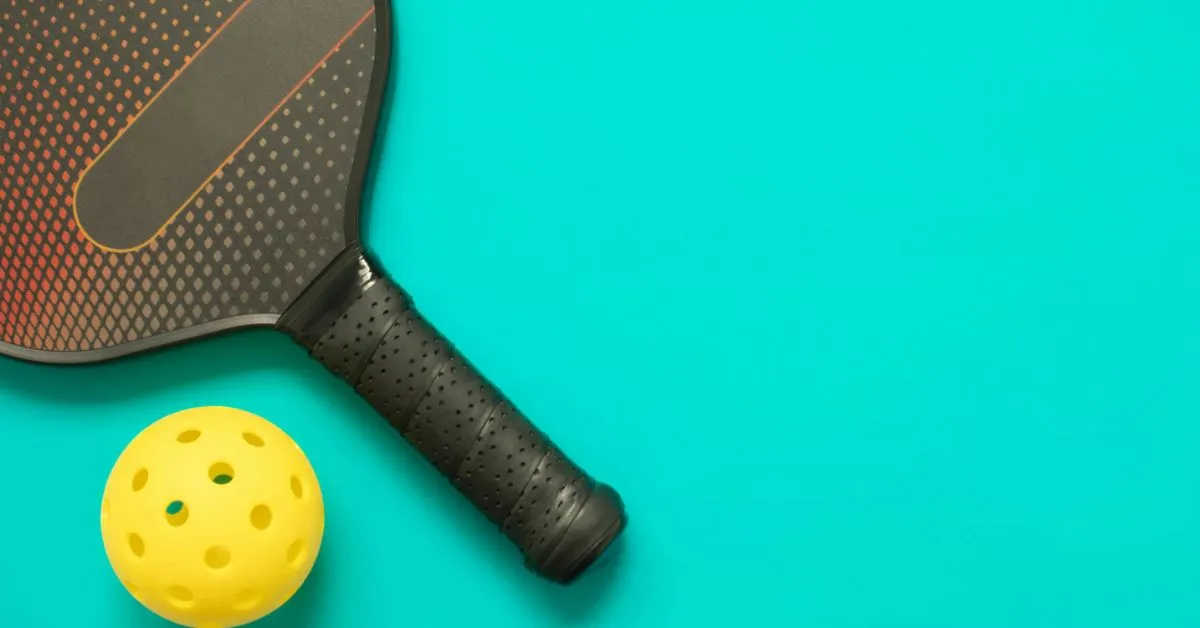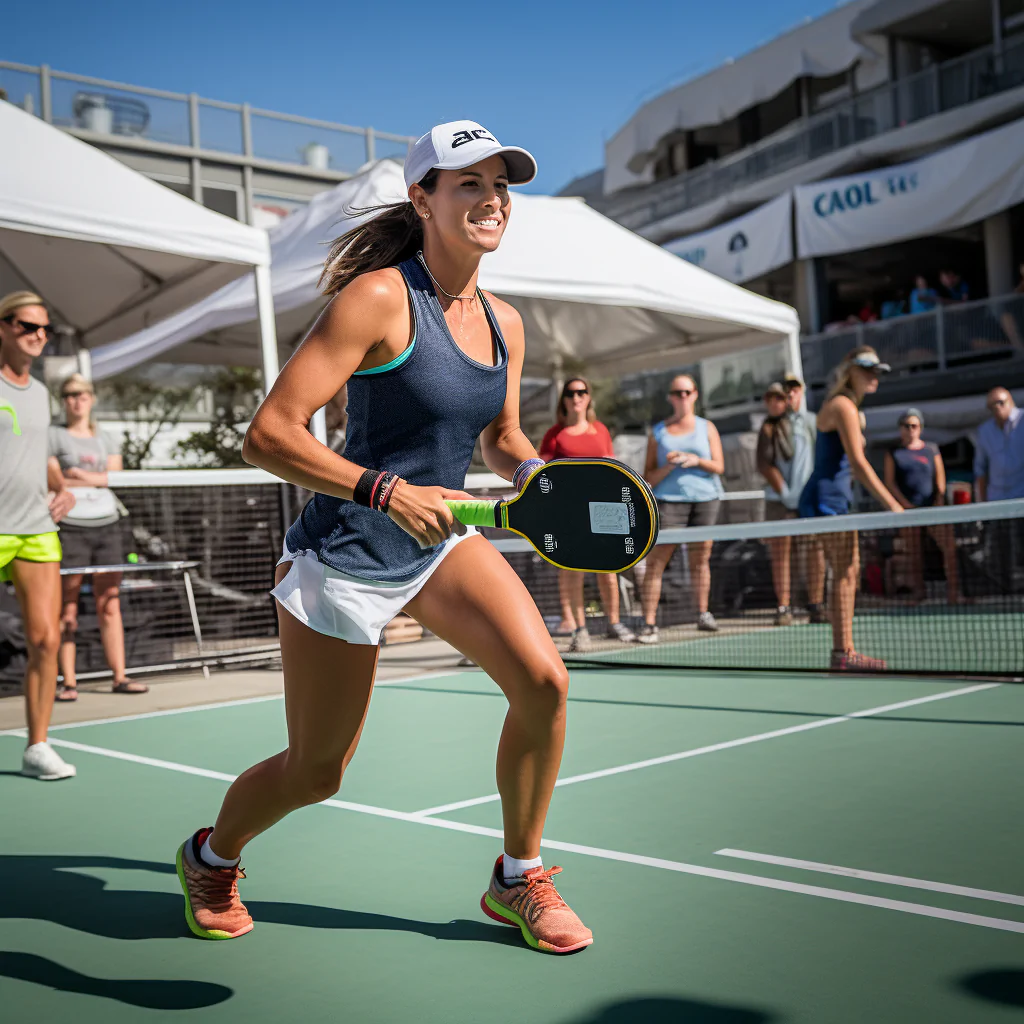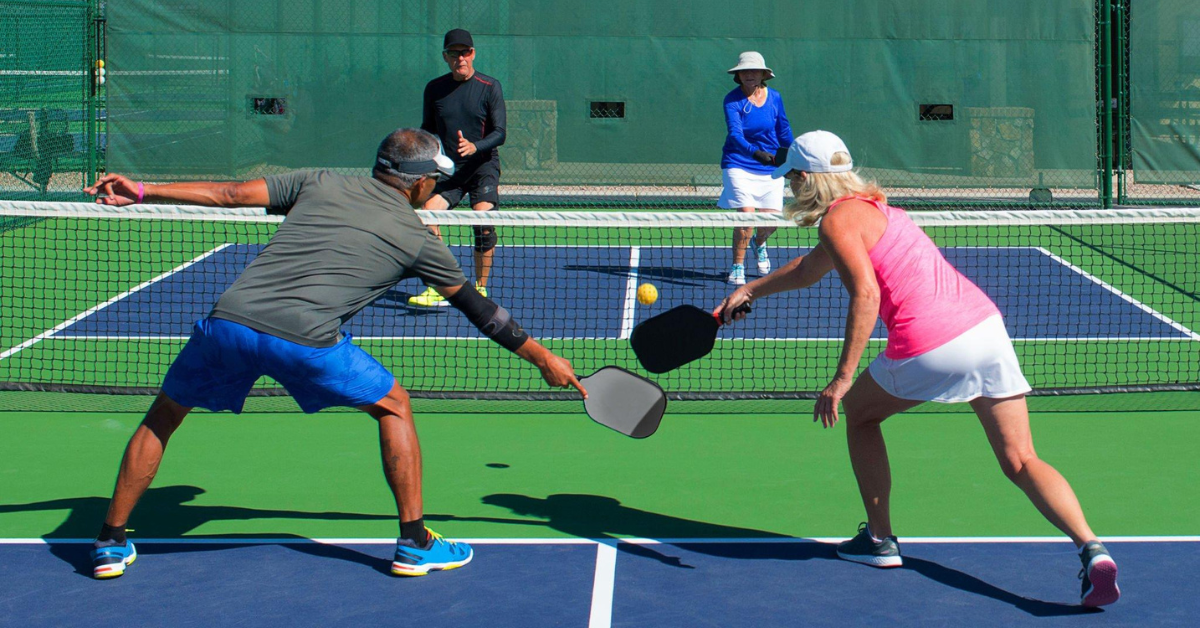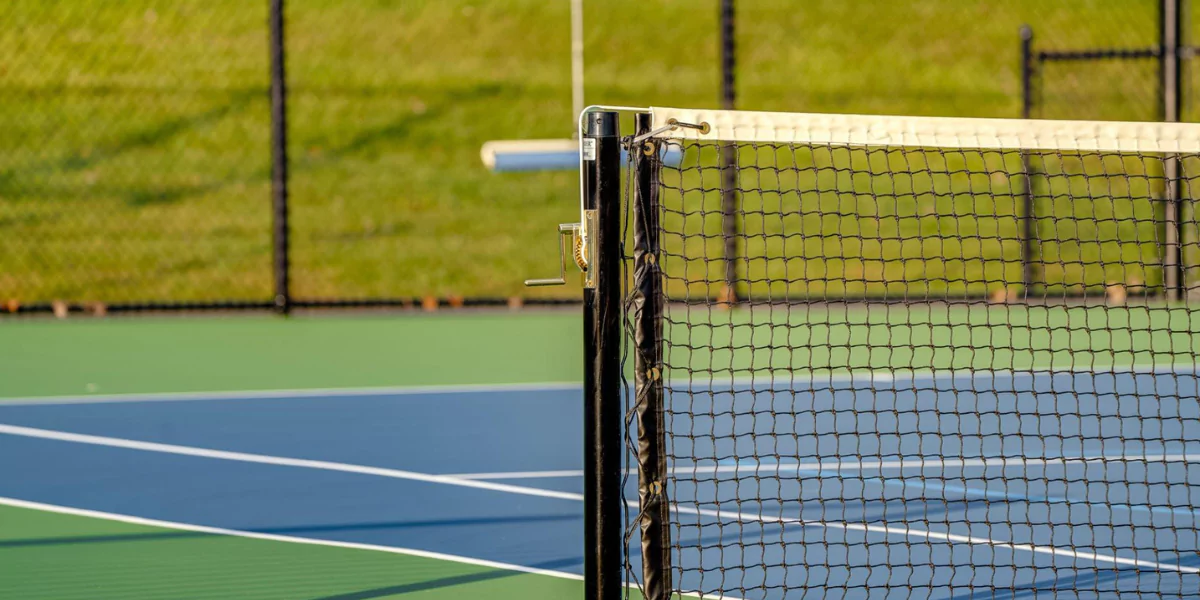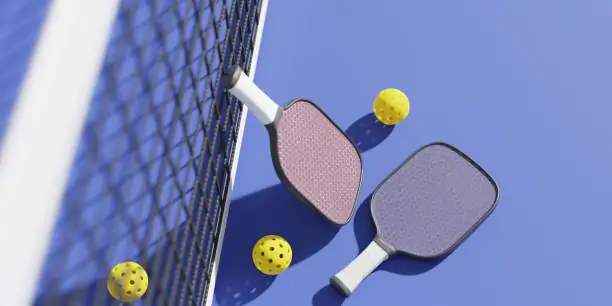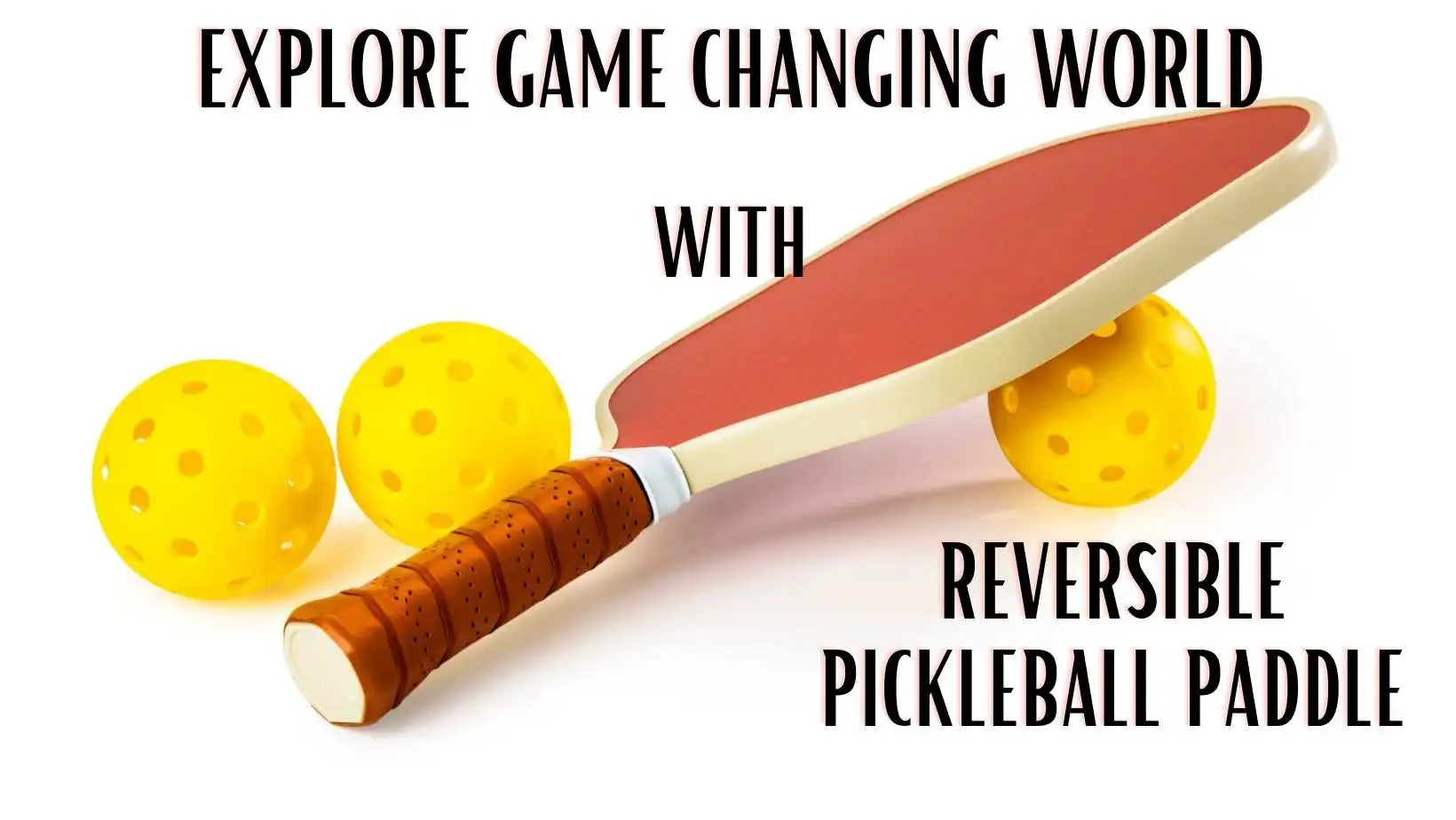What is the main benefit of pickleball for everyone? You would be correct if you mentioned that the returning team gets to “start from the kitchen line.” The returning team begins with one player at the net since the ball must bounce to our opponent’s side. Even so, the serving pair must both stay at the back.
Learning to serve well is a great way to rack up points in pickleball, but returning the serve is just as important. The Return of Serve becomes essential to maintain your advantage and control over the point. But how can you improve the serve return? The following are 8 pickleball return serve tips.
Tips for return of pickleball serve
- The depth of the return is the next skill to master after getting into position to hit the target return.
- To make it difficult for your opponents to attempt to score, hit the ball deep in the service box.
- Returning the ball HIGH will give you more time to touch the net.
- Players missing the non-volley line after their serve return is another “mistake” I observe.
- Avoid giving the serving team the advantage by following your return to the non-volley zone line.
- This activity may be performed with a friend if you want to enhance your return of serve in pickleball. Markers should be set roughly three to four feet from the baseline on the opposing sides of the court (in bounds)
- Better returns result from deeper returns. The ideal shot is one in which your opponent’s third shot is taken near or behind the end line.
- Keeping the return maintains the point in your favor and force your opponents to strike tough shot.
Deep return the ball
Most of the scoring in pickleball happens with all players close to the net, regardless of what happened in the first few shots and volleys. So, while returning a serve, you should position it around your opponent’s baseline. This allows you to enter the kitchen while making your opponent stay back longer than they would like.
Return of the smooth and high.
Returning the ball high and softly might seem like a mistake at first. Yet whatever advantage or forward momentum your opponent had can be stopped if you give the ball enough arc and send it far. Also, your objective is to reach the kitchen. There is plenty of time to accomplish it when a serve is returned with a high arc.
Can either player return the serve in pickleball?
Pickleball Return of Serve Rules
The only serve rule that must be followed in relation to the deep return of serve is that: A serve that lands in the perfect service box must be returned by the return of serve after one bounce. Almost everywhere is a suitable location for that return-of-server. The official guideline for player positions and serve returns are as follows:
“Partner Positions, There are no positional restrictions in doubles, save for the server , as long as every player is on their respective team’s side of the net. Both on and off the court are options for placement. The proper server must give the serve from the appropriate service court, and the adequate receiver must receive it.”
Does the pickleball serve return have to bounce?
Yes. Before hitting the return of serve out of the air, the serving team must let it bounce. The returning team usually has the court position advantage because of the “double-bounce” rule (the ball must bounce twice on each side before being hit out of the air), as they can reach the non-volley line first.
Can a serve return in pickleball end up in the kitchen?
In pickleball, the kitchen, also known as the non-volley zone, is a designated area near the net where players are not allowed to hit the ball on the fly. However, there is a specific rule regarding the serve and the kitchen in pickleball.
When serving, the ball must land in the diagonal service court on the opposite side of the net. The serve is not allowed to land in the kitchen. If the serve lands in the kitchen or hits the non-volley zone line, it is considered a fault, and the serving side loses the serve.
After the serve, during regular play, the ball can land in the kitchen as long as it bounces first. If a player returns the ball and it lands in the kitchen without bouncing, it is considered a fault, and the point goes to the opposing side.
In summary, the serve cannot land in the kitchen, but during the course of the game, the ball can bounce in the kitchen as long as it is not a direct shot without bouncing.
Key Points in Pickleball Return of Serve
| Aspect | Description |
| Importance | The return of serve is crucial as it allows you to take control of the point from the start. Around 40% of points are won directly off the return. |
| Positioning | Get into ready position as server is about to hit. Stay balanced and light on your feet. Execute a split step for explosive movement. |
| Swing Mechanics | Keep a loose but firm grip. Use a short, compact backswing. Meet the ball out front. Follow through towards target. |
| Shot Selection | Hit returns deep to neutralize serve. Angle cross-court returns to pull opponent wide. Drop shot returns to disrupt rhythm. Vary placement, pace, height and spin. |
| Common Mistakes | Flat-footed reaction, overcommitting on positioning, taking eyes off ball, poor follow through, always returning to same spots. |
| Gear | Lightweight paddle around 7.0-7.8oz for quick reaction time. Grippy textured face for spin. High traction shoes prevent sliding. Sports glasses shield eyes. |
Importance of a Good Return in Pickleball
A good return of serve in pickleball is absolutely crucial to setting yourself up for success in the point. The return shot provides the first opportunity to take control of the rally and apply pressure back onto the serving team. Mastering the pickleball return is a fundamental skill that all players need to develop.
The return of serve sets the tone for the ensuing rally. If you can manage an aggressive, well-placed return, it will put your opponents on the defensive right away. Even if you are only able to make a neutral, steady return, this is preferable to a weak return that gives all the advantage to the serving team.
Stats show that around 40% of points in pickleball are won directly off the return of serve. This underscores how vital the return is in terms of dictating the outcome of a match. Players who consistently return well tend to win more frequently. Let’s delve into why the return shot holds such importance in this unique sport.
Why the Return Shot Is Crucial in Pickleball
There are several key reasons why mastering your return of serve is so important in pickleball:
Allows You to Take Control of the Point
First and foremost, a strong return allows you to wrest control of the point away from your opponents. If the serving team has established dominance through a forceful serve, your return is the chance to flip the script and seize the momentum in your favor. Even against a conservative serve, you can use the return as an opening to get on the front foot for the rest of the rally.
Puts Pressure Back on the Server
By hitting a commanding return, you instantly put the pressure back on your opponents. A dominant return forces the serving team onto the defensive and disrupts any strategies they had planned after the serve. Even if your return is simply deep and consistent, it still makes the server and their partner have to adapt and react.
Sets Up Your Offensive Strategy
Beyond gaining control and applying pressure, an effective return enables you to launch into your offensive game plan. For example, you can wrong-foot the server with an angled return to open up the court for your partner’s forehand attack. Or you could neutralize the serve with a deep return and then follow it up with a quick net rush. No matter your tactics, the return presents the first chance to orchestrate your Pickleball strategy.
Key Stats on Importance of Return in Pickleball
The statistics on pickleball further highlight why the return of serve is so integral to success in this sport:
- On average, around 40% of points are won directly off the return shot. This proves how often an effective return can lead right to winning the rally.
- At the professional level, the very best pickleball returners win over 50% of points on their return. Compare this to tennis where the top returners only win about 35% on return.
- In matches between evenly matched doubles teams, the side that returns more effectively usually ends up winning. Good returners apply too much pressure for opponents to overcome.
- Returner’s advantage is more pronounced in pickleball compared to tennis because the smaller court size gives returners less time to react. Solid returns are harder to come by.
- Weaker players generally win only 20-30% of rallies on return. Bolstering return skills is one of the fastest ways to improve results.
The numbers confirm the intuitive sense that returning well leads to more wins in pickleball. That’s why all players should dedicate time toward improving their return proficiency. Next let’s examine specific tactics for building better return skills.
How to Improve Your Pickleball Return
Now that we recognize the value of the return, let’s get into some nuts and bolts for improving this vital pickleball skill. While returning well partly comes down to innate reaction time and hand-eye coordination, there are several tactics you can focus on to enhance your return game:
Positioning and Footwork
Success on the return starts with getting yourself in the optimal position to react to the incoming serve. This requires mastering key footwork patterns and positioning concepts:
- Get in Ready Position as Server is About to Hit – Don’t be caught flat-footed! As the server initiates their swing, get into an athletic ready stance so you are poised to explode in either direction. Knees bent, weight balanced, eyes focused intently.
- Keep Feet Active and Ready to Move – Don’t get stuck in cement, continue shuffling your feet to be light on your toes. This active footwork keeps you nimble so you can react quickly to wide serves.
- Focus on Split Step Timing – The “split step” is a little hop as the serve is struck to sync your movement with the ball. Time this split step well so you can utilize the stored energy in your knees to explode powerfully left or right.
- Align Appropriately for Forehand Return – When possible, align forehand to return to your strength. But don’t open up too early, stay neutral until serve is hit.
- Get Clear Signals from Server – Read serve motions to get early clues on serve direction. But don’t overcommit too soon or you’ll get faked out.
Expert footwork and positioning allows you to get a quick jump on the ball so you’re not caught off-guard. The quicker you can get moving to the ball, the better chance you have of making solid contact.
How Court Positioning Affects Shots In Pickleball
Swing Mechanics
Once in position to return, you need sound swing mechanics for hitting the return accurately and effectively:
- Keep Grip Loose But Firm – Don’t strangle the paddle, maintain a light but firm grip so the paddle won’t twist on off-center contact. This allows you to react and swing freely.
- Use Short Backswing – Keep a compact backswing to generate paddle speed quickly. Big windups take too long to unfurl.
- Meet Ball Out Front – Step into the shot and make contact out in front of your body for better control and power. Don’t wait for ball to come to you.
- Block Returns on Hard Serves – Absorb pace cleverly by meeting ball with a firm paddle face and stable base. Don’t try redirecting power serves.
- Follow Through Towards Target – Extend your arm fully through the return to impart spin and control. Follow through points paddle towards your target.
- Watch Ball Through Contact – Keep eyes glued to ball throughout impact so you track the return and react quickly to the next shot.
A controlled, compact swing will produce more consistency on returns. Remember, it’s not about slamming winners, just getting serves back in play effectively. Save your big swings for later in the point when you’re on offense.
Shot Selection
Even more than mechanics, choosing the right return strategy is vital for taking command of the point. Mix up your returns to keep opponents off balance. Here are productive return tactics:
- Return Deep to Neutralize Serve – When in doubt, float a deep return to defend against the serve and start the point on even terms.
- Angle Cross-Court Return – Wrong-foot the server by angling returns cross-court to pull them wide. Great for exploiting weaknesses.
- Down the Line Return – Straight returns down the line apply immediate pressure and limit options for server’s partner.
- Drop Shot Return – Catch servers off guard with quick drop returns that drag them forward from a defensive position.
- Vary Spin on Returns – Topspin, backspin, slice – use all varieties so servers have to adapt spin on volleys and groundstrokes.
- Move Server Side-to-Side – Widen their coverage by alternating cross-court and down-the-line returns to open gaps.
- Return Behind Server – Attempting returns up the middle behind the server can yield weak replies if you execute well.
The more you mix up return placements, pace, height and spin, the more the serving team has to fret about your return prowess. Keep them guessing.
Drills to Practice
Dedicated practice routines centered on the return of serve will build confidence and competence. Here are productive drills:
- Partner Serving Different Serves – Have a practice partner serve various types of serves so you get realistic return rehearsal. Communicate what serves you want to work on returning.
- Use Ball Machine – Dial in ball machines to mimic all kinds of serves. The repetitive practice grooves solid returns.
- Join Serving and Return Clinics – Many Pickleball clubs and tennis centers now offer serving and return of serve group clinics. Sign up to get specialized instruction.
- Play Games of Serve-and-Return – Train returns in context by playing out points of serve-and-return against a partner. Add competition to build mental toughness.
- Shadow Swing Returns – Visualize serves coming at you and rehearse return stroke mechanics. This engrains muscle memory.
Turn return practice into a regular habit, not just occasional. Frequent repetition builds confidence and consistency returning serves of all types.
Common Mistakes on Return of Serve
Now that we’ve covered effective return strategies, let’s examine some of the most prevalent mistakes players make so you can be aware and avoid these pitfalls:
Footwork Errors
Poor footwork causes more imperfect returns than anything. Two major footwork flaws plague returners:
- Flat-footed or Late Reaction – Failure to do the split step or being static as serve is struck. Then you end up stuck in place reaching helplessly.
- Overcommitting Forward or Back – Cheating too far forward or backward based on anticipated serve. Leaves you scrambling to recover. Remain balanced until serve is struck.
Making the small footwork adjustments to stay poised, light on your feet and ready to explode will work wonders for your returns.
Swing Errors
Even with proper footwork, some technical swing errors still creep into returns:
- Taking Eyes Off Ball – Focus drifting as serve is struck leading to mis-hit returns. Keep eyes glued to contact point.
- Late or Extended Backswing – Overloading on backswing when compact stroke is ideal. Compensate by shortening up immediately.
- Lack of Follow Through – Cutting off follow through leads to less control and power. Fully extend for complete returns.
- Mishitting Returns – Poor paddle awareness, keeping too loose a grip or incorrect contact point on paddle face leading to flubbed returns.
Tune your swing mechanics through purposeful practice. Groove compact strokes for optimal returns.
Shot Selection Errors
While technical errors hurt returns, choosing the wrong shots is an even bigger detriment:
- Always Returning to Same Spots – Hitting returns routinely to the same locations makes it easy to defend. Vary placement and patterns.
- Not Varying Spin or Pace – Returns without variation allow opponents to get comfortable. Change speed, spin and height judiciously.
- Failure to Move Server Side-to-Side – Always crossing returns one way misses chance to open court. Alternate cross-court and down-the-line.
- Focusing Too Much on Winners – Trying to crush return winners leads to excessive errors. Worry about consistency first, then add power.
- Not Targeting Weaknesses – Hitting returns blindly rather than intentionally targeting opponents’ vulnerable areas.
Think through strategic return choices to apply maximum pressure on servers.
Common Court Positioning Mistakes And How To Avoid Them
Gear That Can Help Your Return Game
The right paddle and equipment can provide an edge in returning serves. Here are product options to consider:
Paddles
- Lightweight Paddle – Between 7.0-7.8 ounces allows quicker reaction time on returns. Easier to swing fast.
Discover Why You Need A Lightweight Pickleball Paddle
- Paddle with Control – Models with high control ratings help direct returns accurately. Great for spin and touch.
Best Control Pickleball Paddles | For Precision And Control 2023
- Midsize Paddle – Midsize Paddle offers a sweet spot between power and control. Forgiving on off-center hits.
Understanding Pickleball Paddle Sizes: Your Ultimate Guide
- Textured Paddle Face – Grippy face (non-composite) grabs ball spin effectively. Good for negating heavy spin serves.
Boost Your Game With Textured Pickleball Paddle
Shoes
- Lightweight Court Shoe – Minimalist shoe allows explosive footwork and quick changes of direction.
- High Traction Outsole – Sticky rubber outsole prevents sliding during extreme lateral moves.
- Lateral Support – Models with exterior support cages lock-in feet on lateral lunges.
Eyewear
- Wrap-around Sports Glasses – Curved lens shape blocks sun and glare from all angles.
- Interchangeable Lens Tints – Switch between tints like yellow, brown and rose to adjust for varied light conditions throughout the day.
- Prescription Inserts – For players needing Rx glasses, inserts adapt sports frames to your vision needs.
Smart product choices tailored to returning serves can give you an edge. Don’t overlook the importance of the right gear.
Final Words
Learning to serve well is essential, but returning the serve is equally crucial to maintain control over the point. To improve your return of serve in pickleball, there are several tips you can follow.
Hitting the ball deep in the service box makes it difficult for your opponents to attempt to score. Returning the ball high will give you more time to touch the net. Above mentioned tips will help you improve the return of serve.
Mastering the return of serve should be a priority for any dedicated pickleball player. A commanding return sets the tone for the entire rally and offers your first chance to seize control of the point from opponents. Despite its importance, the return shot is often neglected in players’ practices. Don’t wait to work on returns until right before a big match! Make it a regular part of your training regimen.
Any player can improve their returns through purposeful work on positioning, footwork, swing mechanics and strategic shot selection. Be aware of the most common errors like footwork missteps and shot choice blunders. Then implement drills like alternating cross-court and down the line returns to ingrain solid returning technique.
While returns do rely partially on innate reaction ability, dedicated training will overcome any natural limitations. Be patient with yourself and keep practicing returns consistently rather than getting discouraged. Over time, your return proficiency will rise dramatically. Along with skill work, take advantage of modern paddle technology and well-fitted shoes and eyewear. Every bit of marginal gain helps when competing against tough servers.
Start your next match with renewed focus on dominating the return of serve. Use it is an opportunity to assert yourself and dictate points. Aggressive, creative returns will have opponents dreading your return game.
Bonus Tips: If you want to get grip on your game you have to learn pickleball serving rules . Also you need to avoid the Common mistake made by beginners in pickleball serving.
FAQs
Q: Can the return of a serve in pickleball land in the kitchen?
Ans: Yes, the return-of-serve may end up in the kitchen. The serve must be made outside the non-volley zone (kitchen).
Q: Can you return a serve before it bounces in pickleball?
Ans: In pickleball, the serve must bounce once on the receiving side, and the return must also bounce before striking it. Therefore, you cannot return a serve before it bounces.
Q: What is the best way to return a serve in pickleball?
Ans: The best way to return serve is to block it back deep and neutralize it. Don’t try to smash return winners. Focus on getting solid, consistent depth to start the point evenly. Position yourself well, react quickly with a split step, and use compact, controlled swings. Vary placement and spin to keep opponents guessing.
Q: Can you return a serve in pickleball?
Ans: Yes, you can legally return a serve in pickleball. The return must land in the opposite diagonal court from where the serve was hit. The server’s partner cannot return serve. Only the player in the diagonally opposite court can return.
Q: Can the return of a serve in pickleball land in the kitchen?
Ans: No, the return cannot land in the non-volley zone, also known as the kitchen. If a return lands in the kitchen before bouncing, it is a fault. The ball must first bounce past the kitchen lines to be considered a legal return.
Q: Can you drop the ball in the court on a pickleball serve?
Ans: No, intentionally dropping the ball into the service court is illegal. You must hit the serve with the paddle face for it to be valid. The serve motion must include a clear upward hitting movement as contact is made.
Q: Where do you stand when returning a serve in pickleball?
Ans: The returner should stand about 2 feet behind the baseline and 1-2 feet to the side of center mark. This allows time to react while covering serves aimed near the sidelines. Adjust positioning based on server’s tendencies. Remain in ready position on balls of feet.
